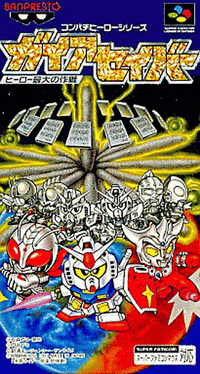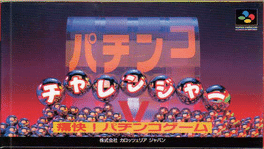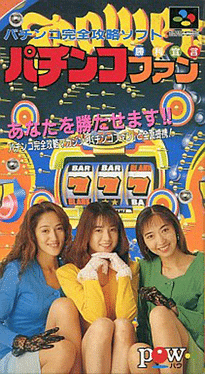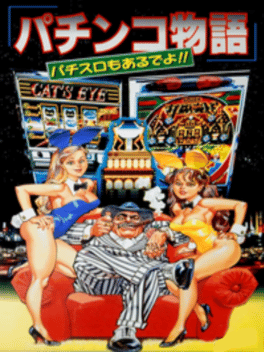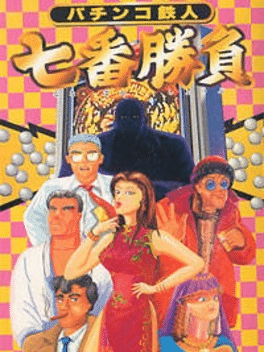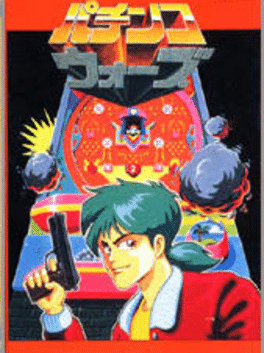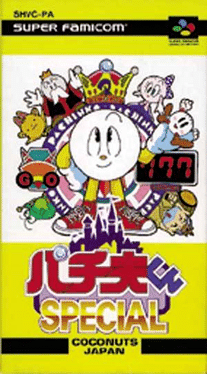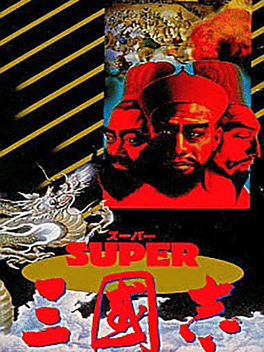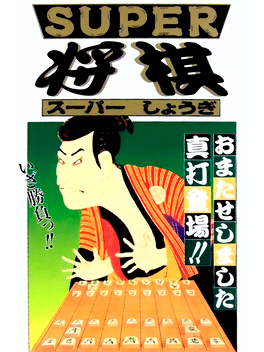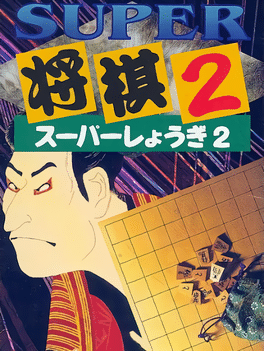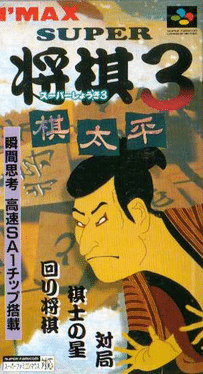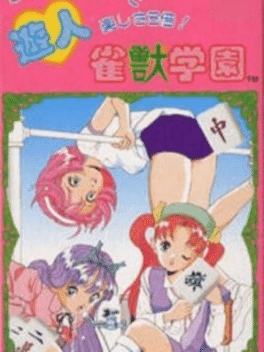Most Popular Super Famicom Games - Page 22
-
Gaia Saver: Hero Saidai no Sakusen
1994
Gaia Saver is a Role-Playing game, developed by Arc System Works and published by Banpresto, which was released in Japan in 1994. -
Pachi-Slot Gambler
1995
Pachi-Slot Gambler
1995
Pachi-Slot Gambler is a Miscellaneous game, published by Nichibutsu, which was released in Japan in 1994. -
Pachinko Challenger
1995
Pachinko Challenger
1995
Pachinko Challenger is a Miscellaneous game, published by Carrozzeria, which was released in Japan in 1995. -
Pachinko Fan: Shouri Sengen
1995
Pachinko Fan: Shouri Sengen is a Miscellaneous game, published by Pow, which was released in Japan in 1994. -
Pachinko Maruhi Hisshouhou
1994
Pachinko Maruhi Hisshouhou is a Miscellaneous game, developed by Jorudan and published by Vap, which was released in Japan in 1994. -
Pachinko Monogatari: Pachi-Slot mo Aru de yo!!
1993
Pachinko Monogatari: Pachi-Slot mo Aru de yo!! is a Miscellaneous game, developed by Kaze and published by KSS, which was released in Japan in 1993. -
Pachinko Ren Chan Tengoku
1995
Pachinko Ren Chan Tengoku is a Miscellaneous game, developed by Jorudan and published by Vap, which was released in Japan in 1995. -
Pachinko Tetsujin: Shichiban Shoubu
1995
Pachinko Tetsujin: Shichiban Shoubu is a Miscellaneous game, developed by Graphic Research and published by Daikoku, which was released in Japan in 1995. -
Pachinko Wars
1992
Pachinko Wars
1992
Pachinko Wars is a Miscellaneous game, developed by OeRSTED and published by Coconuts Japan, which was released in Japan in 1992. -
Pachinko Wars 2
1994
Pachinko Wars 2
1994
Pachinko Wars 2 is a Miscellaneous game, developed by OeRSTED and published by Coconuts Japan, which was released in Japan in 1993. -
Pachio-kun Special
1992
Pachio-kun Special
1992
Pachio-kun Special is a Miscellaneous game, developed by Marionette and published by Coconuts Japan, which was released in Japan in 1992. -
Super Real Mahjong PV: Paradise
1995
Super Real Mahjong PV: Paradise is a Miscellaneous game, developed and published by Seta Corporation, which was released in Japan in 1995. -
Super Sangokushi
1994
Super Sangokushi
1994
Super Sangokushi is a Strategy game, published by Koei, which was released in Japan in 1994. -
Super Shogi
1992
Super Shogi
1992
Super Shogi is a Miscellaneous game, published by I'Max, which was released in Japan in 1992. -
Super Shogi 2
1994
Super Shogi 2
1994
Super Shogi 2 is a Miscellaneous game, published by I'Max, which was released in Japan in 1994. -
Super Shogi 3: Kitaihei
1995
Super Shogi 3: Kitaihei is a Miscellaneous game, developed by Gaibrain and published by I'Max, which was released in Japan in 1995. -
Super Tekkyu Fight!
1995
Super Tekkyu Fight!
1995
Super Tekkyu Fight! is an Action game, developed by Metro and published by Banpresto, which was released in Japan in 1995. -
Super Trump Collection
1995
Super Trump Collection is a Miscellaneous game, published by Bottom Up, which was released in Japan in 1995. -
Kuusou Kagaku Sekai Gulliver Boy
1996
Spain is trying to take over Europe, and Judo, prince of Spain or something, killed Gulliver’s father. Now Gulliver’s pissed off and wants revenge. Who wouldn’t? And so you set off to kick ass with nothing but Edison’s bombs, Gulliver’s hadouken thing, and Gulliver’s gigantic hair. Misty eventually joins you, but ends up being dead weight at first :P Oh, and in the second part of the game, you get this badass mech thing for all of two or three boss battles. -
U-jin: Janjuu Gakuen
1993
U-jin: Janjuu Gakuen
1993
An anime-themed Mahjong game from Varie for the Super Famicom. Features artwork from prominent manga artist U-Jin. Yuujin: Janjyu Gakuen ("U-Jin: Sparrow Veterinary School", roughly) is a mahjong game published by Varie. The player can assume the role of any of three heroines, or create their own, as they take on opponents throughout their eponymous school. The game includes a collaboration with manga artist U-Jin (birth name: Ube Yamaguchi), who helped create the various anime characters and is featured in the game's title. Like many mahjong games, Yuujin: Janjyu Gakuen was never released outside of Japan. It was followed with a sequel: Yuujin: Jankyu Gakuen 2.
